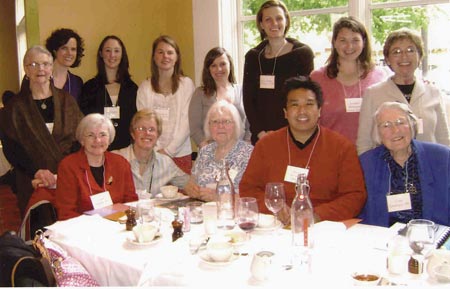By Kelly Brooks-Staub
Nursing leaders at rural hospitals “face distinctive issues and challenges,” according to a new study by assistant professor Robin P. Newhouse, PhD, RN, CNOR, CNA.
Newhouse conducted a focus group of nursing executives from rural hospitals to study how various factors—external environment, internal organization, and nursing infrastructure—affect the quality of nursing and patient outcomes in rural hospitals.
She discovered that the physical and professional isolation of rural hospitals reduces networking opportunities, making it difficult to share best practices with other hospitals. Noting that rural patients are six percent more likely to be uninsured than residents in urban settings, executives said this put an undue burden on their emergency departments. Roughly a quarter of patients who visit the emergency department are uninsured, they said, which contributes to the financial deficits many rural hospitals face.
Nursing leaders also reported that patient volume and demand for hospital services is not as constant as it may be in an urban setting—making income unreliable, and making it difficult for staff to improve their skills or measure the quality of their services. “We don’t get head trauma all the time, but we’re on a major highway. So we get one every three months,” said one nurse executive who was interviewed.
Financial difficulties have led to nursing salaries that are low and non-competitive. In addition, many nurse executives can’t afford unit educators. As a result, some are exploring partnerships with nursing schools for education and online competency programs for their hospital’s nurses.
The focus group offered a variety of innovative solutions to rural nursing problems. Suggestions included coordination among federal health care and benefits programs so they can be used seamlessly on behalf of the patient; promoting a transportation infrastructure to improve access from homes to hospitals; and financial relief from the government for rural hospitals. One creative idea for containing costs was that rural hospitals could form buying groups, increasing their leverage with health care product suppliers to obtain the best prices possible.
“Nursing care affects patient outcomes, and rural hospital nursing is a cornerstone of hospital quality,” says Newhouse, whose study, “Exploring Nursing Issues in Rural Hospitals,” appeared in the June 2005 issue of the Journal of Nursing Administration. “We need further study of the impact of policy and strategy decisions on rural nursing. As America struggles to discover how to deliver quality health care to this priority population, the contribution of rural hospital nursing is absolutely essential.”
Newhouse plans to conduct further study in rural nursing through a three-year Mentored Scientist Development Award from the Agency for Health care Research and Quality (AHRQ). The award will provide additional health services research training and fund a study to evaluate the effects of legislative and market influences on rural nursing structure and patient outcomes.

 Alumni Weekend 2010
Alumni Weekend 2010 President's Message
President's Message Take Action!
Take Action! Living Legacy
Living Legacy







